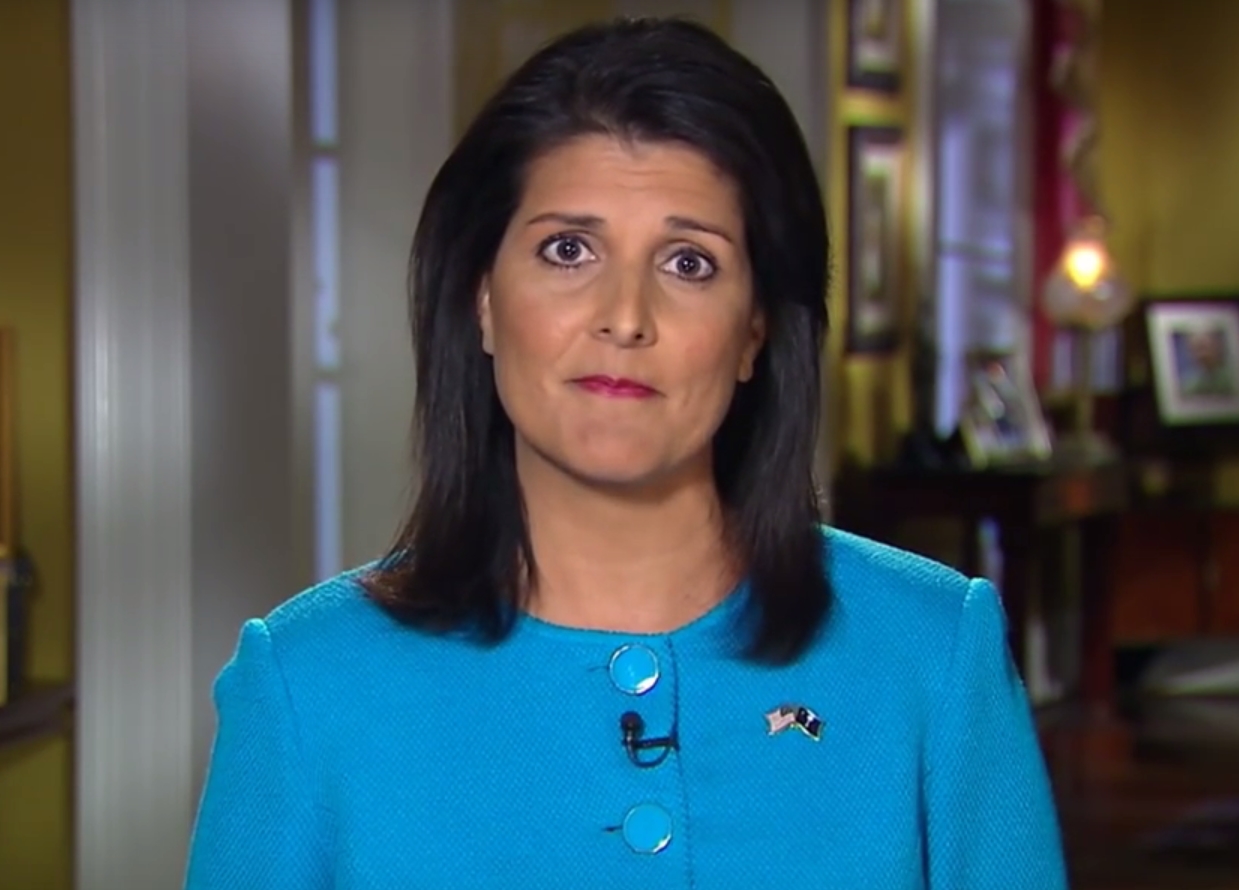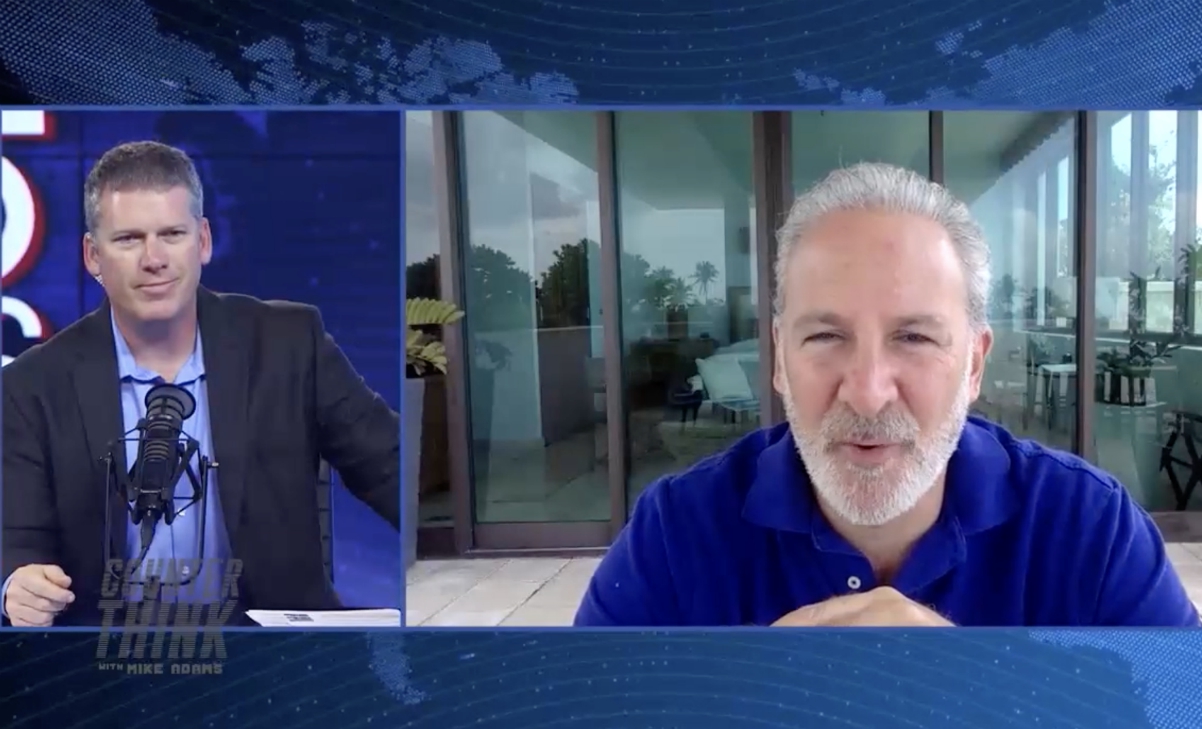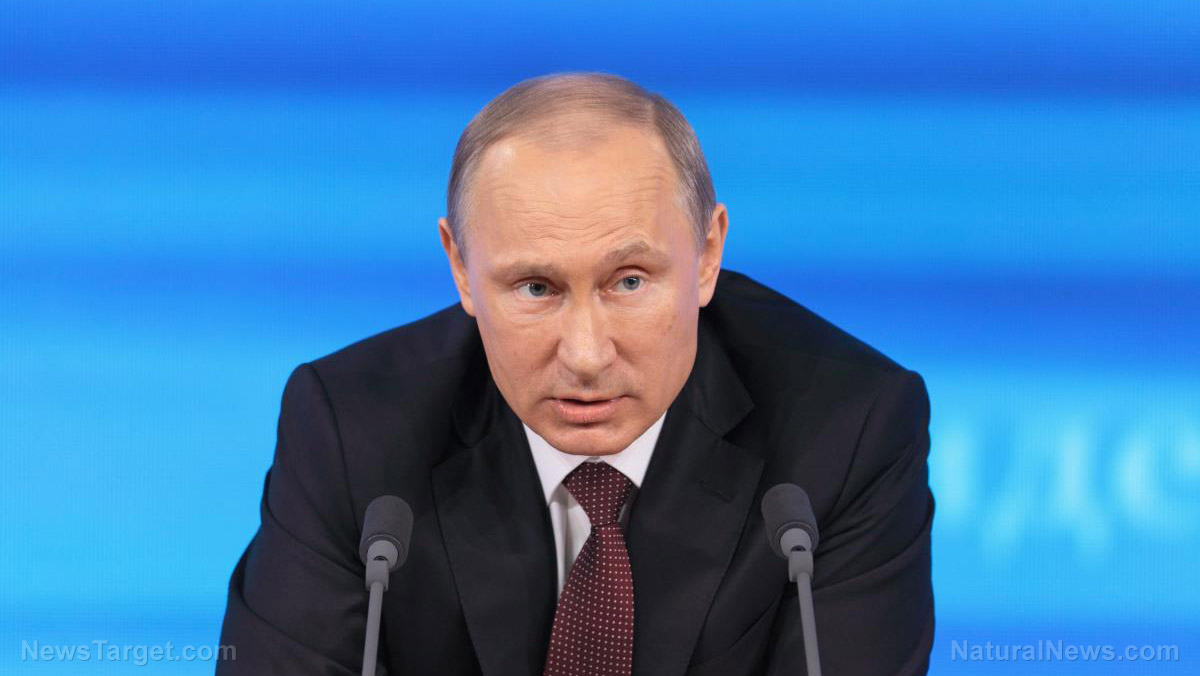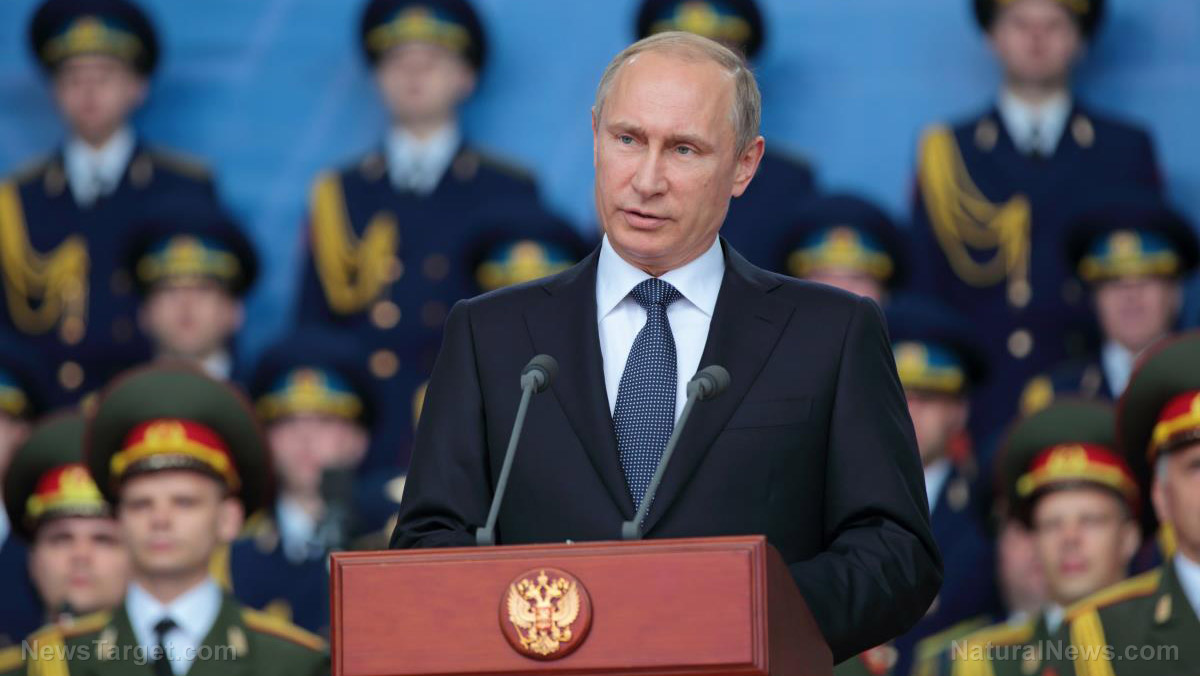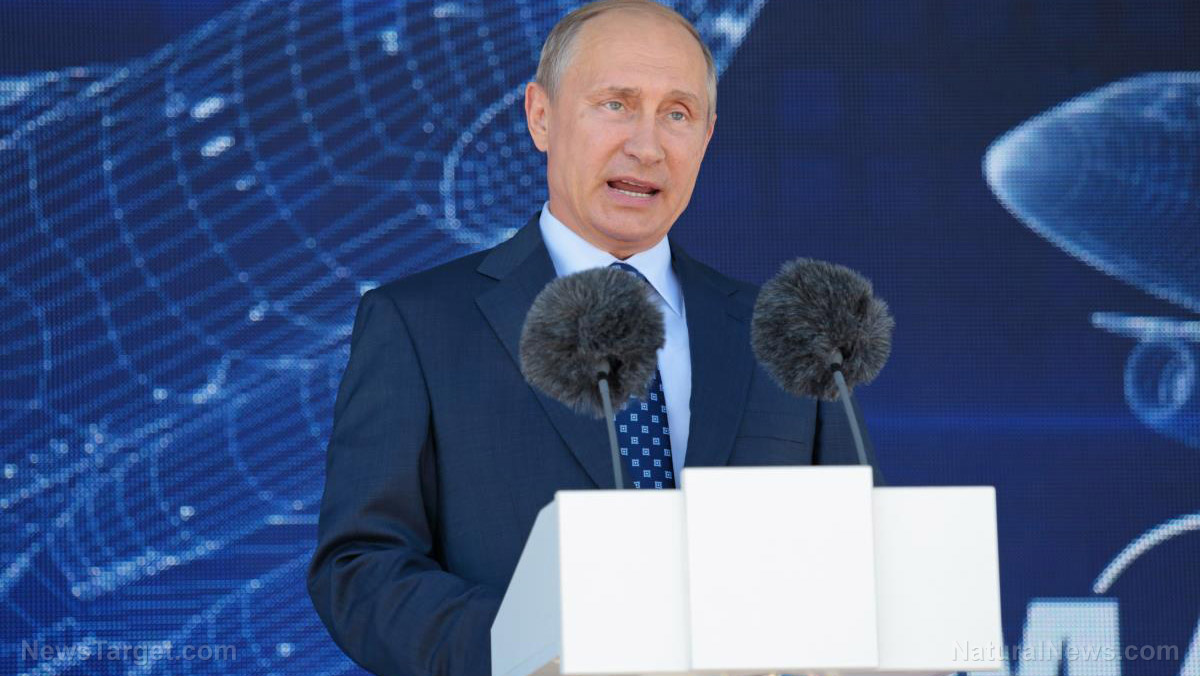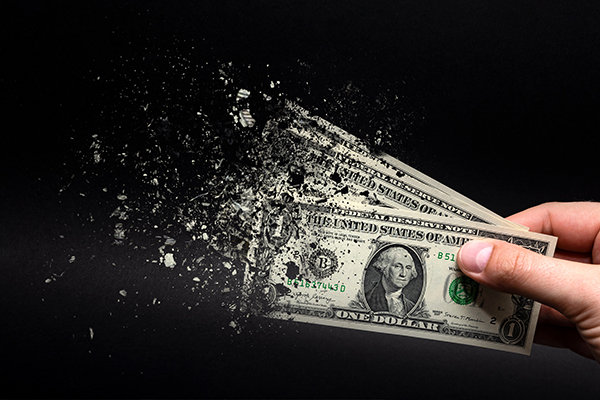
(Article by Alasdair Macleod republished from ConservativePlaybook.com)
There is strong evidence that planning for this new trade settlement currency has been in the works for some time and has been properly considered. That being so, we are witnessing the initial step away from fiat to gold backed currencies. Without the burden of expensive welfare commitments, all the attendees in Johannesburg can back or tie their currency values to gold with less difficulty than our welfare-dependent nations. And it is now in their commercial interests to do so.
We have been brainwashed with Keynesian misconceptions and the state theory of money for so long that our statist establishments and market participants fail to see the logic of sound money, and the threat it presents to our own currencies and economies. But there is a precedent for this foolishness from John Law, the proto-Keynesian who bankrupted France in 1720. I explain the similarities. That experience, and why it led to the destruction of Law’s livre currency illustrates our own dilemma and its likely outcome.
It’s not just a comparison between fiat currency and gold. America’s financial position is dire, more so than is generally realised. The euro is additionally threatened with extinction because of flaws in the euro system, and the UK is already in a deeper credit crisis than most commentators understand.
Introduction
On 7 July, news leaked out and was then confirmed by Russian state media that the BRICS meeting in Johannesburg would have a proposal on the agenda for a new gold-backed currency to be used exclusively for trade settlement and commodity pricing. It appears that this is still beyond the comprehension of the mainstream media who have failed to even report on it. But like the fall of the Berlin Wall in the twentieth, it will probably turn out to be the most important monetary and geopolitical development this century.
The very few of us who have followed this story from the outset know that the Russian confirmation is the culmination of a trail of clues dating back to the time of the western alliance’s sanctions on Russian trade. With very few exceptions, among those who don’t understand the whys and wherefores that lead us to this event are the press, economists of all schools, and the western financial community.
Driving this is a war between the hegemons, with America on one side and Russia in partnership with China on the other. Until Russia was sanctioned, the Asian hegemons appeared to have a policy of sitting on their hands and letting the Americans tie themselves in knots. This has been evident in military strategy — Syria, Afghanistan, and other pyrrhic victories or failures. But it has also been true in the hidden financial war. And it is the financial war which could determine the military outcome, because if the dollar is destroyed, so will be America’s military capability and NATO will fall apart.
That much should be obvious to independent observers. Therefore, an important question to be answered is under what circumstances would the Asian hegemons drop their generally passive strategy and take the initiative? As well as Russia’s Special Military Operation last year, there is evidence that the time has now arrived. Russia’s trade surplus has now fallen sharply, and the SMO in Ukraine is a drain on otherwise healthy government finances. Because of these factors, President Putin needs to act soon to bring his SMO to a conclusion, or alternatively act to drive global commodity prices higher, which is the same thing as undermining the purchasing power of the dollar.
China sees this and faces an additional problem from the escalation of US hostilities over Taiwan. If Ukraine continues to worsen with neither party being able to backdown, China could be dragged into the conflict, given the common enemy. Furthermore, with much of Africa and Latin America migrating away from America’s sphere of influence and towards Asia, rising dollar interest rates are creating a crisis for those of them owing dollars. China almost certainly believes that in bankrupting these emerging economies by raising interest rates, America is attempting to stop them from joining BRICS, and seeks to take over many of their assets and infrastructure which China has helped create.
This threat is now greater to China’s long-term economic strategy than threats to her export trade with America and Europe. This is why China is now prepared to back the Russian plan for a new gold-backed trade currency, which is bound to rapidly undermine the fiat dollar, as all central banks in the Asian hegemons’ sphere of influence sell off their dollar reserves to acquire physical gold. For a long time, I have described activating gold as being the financial equivalent of a nuclear war — this is about to be tested.
Skip the gold scams and go straight to the smart money with bullion. Contact Kirk Elliott and get true guidance instead of just another sales pitch.
A lesson for us from Cantillon
One of the earliest writers on economics was an Irishman, Richard Cantillon, who went into partnership with his cousin, also named Richard in Paris in 1714, finally assuming control of the bank. It was during this period that John Law befriended the Duc d’Orléans, the Prince Regent for the infant King Louis XV who succeeded Louis XIV in 1715. John Law was a proto-Keynesian, with similar policies for the state expansion of credit as the means by which a government could stimulate an economy, thereby increasing tax revenue. With the royal finances facing bankruptcy due to Louis XIV’s profligacy, the Regent grasped at Law’s scheme like a drowning man thrown a lifebelt.
There were four essential elements to Law’s scheme, which resonate with the monetary regime today:
- The establishment of a bank with the principal function of issuing banknotes to replace gold and silver coins as the medium of exchange. This would evolve his commercial bank into a prototype central bank, appointed by the government to have a monopoly on the note issue. Gold and silver coins were to be driven out of circulation entirely.
- The establishment of a trading entity (later known as the Mississippi venture) as part of a debt management scheme for the benefit of royal finances. The bank and the venture were to be the only tradable financial assets. This equates with all bond and stock market asset values being inflated currently, for the general enhancement and perpetuity of tax revenues.
- To use his position as controller general of finances to boost the values of both his Royal Bank and the Mississippi venture by expanding the quantity of banknotes and bank credit.
- To merge the new central bank with France’s import and export monopoly embodied in the Mississippi venture to secure income from trade tariffs and duties, significantly enhanced by the wealth created through the expansion of credit.
The similarity of Law’s financial policies with those of today are remarkable. The state’s monetary monopoly over its economy managed by a central bank replicates Law’s design for his fiat currency. The manipulation of today’s fiat currencies has ensured a wealth transfer from savers to the state for the benefit of government finances. The Fed and other central banks believe that a heathy stock market (a bubble?) is essential to maintaining consumer confidence in spending, and therefore sustaining tax revenues. The expansion of central bank balance sheets creates a wealth illusion in bond and stock markets, leading to irrational valuations.
While profiting hugely as a banker by lending credit to wealthy speculators, Cantillon was sceptical of Law’s scheme from the outset. And he was not above the sharp practice of taking in stock as collateral against loans and immediately selling it without informing the borrower. This was to result in legal actions in London’s Court of Chancellery after the bubble burst, all of which found in his favour on technicalities.
In 1720, Cantillon decided the collapse of Law’s scheme was coming. He sold all the remaining shares under his control amounting to 1,742 shares, 573 of which were collateral taken in that year at prices between 8,200 livres prior to 12 March to as low as 4,550 livres in September for a total value of 8,229,786 livres.[i]
Besides clearing out all remaining shares under his control, his choice of action was to short Law’s livres on the foreign exchanges in London and Amsterdam in preference to Mississippi stock in the market. As events proved, Cantillion was right, because between the peak of the bubble in February 1720 and the final quarter of that year, Law’s merged Mississippi venture lost two-thirds of its value, while the livres became worthless in London and Amsterdam.
From his Essai sur la Nature du Commerce en General published posthumously in 1755, it was clear that Cantillion understood the inconsistencies in Law’s actions. In late-February 1720, Law promised to not expand the money supply, but from early March he was forced to do so to support share prices by buying them in the market. In May over the Whitsuntide holiday, with the agreement of the Prince Regent it was decreed that there would be a phased reduction in shares and banknotes to stabilise the shares and the currency, but that failed in both respects. These actions rhyme strongly with the inconsistency of central bank policies today — fighting inflation while still relying on currency debasement to fund fiscal deficits. Furthermore, central banks are raising interest rates in an attempt to control price inflation, without realising that it is the valuation users place on a fiat currency which ultimately sets its value, not monetary policy.
Today, bank credit has stopped growing and is already contracting in a number of major currencies, being driven by a combination of high commercial bank balance sheet leverage and growing concerns over bad and doubtful debts which taken together threaten to bankrupt entire banking systems. Furthermore, like Law’s Banque Royale which did not survive the 1720 crisis, today’s central banks are already technically bankrupt on a mark-to-market valuation basis due to their acquisition of government bonds at inflated prices through quantitative easing.
The one shoe to drop is the switch from raising interest rates intended to stop the general level of consumer prices rising above official 2% targets, to rescuing the entire system through a renewed credit expansion. But as the John Law experience in February 1720 showed, while a switch from supporting currency values to credit expansion to rescue a failing system is inevitable, equally it does not succeed.
The dollar and related currencies are being challenged
So far, few have minded that the dollar is a naked fiat currency. But the proposed BRICS trade settlement currency clothed in gold is bound to expose that nakedness for all markets to see. Not only will we then witness the ending of the fiat dollar regime, but we will see a forerunner of its replacement. In common with the punters at the top of the Mississippi bubble in February 1720, today there are very few commentators who, like Cantillon, detect these dangers ahead.
For fiat currencies it is a problem with two aspects. A properly designed new BRICS trade settlement currency will lead to problems for fiat currencies on a comparative basis. And led by the dollar, the fiat currencies’ credibility is being undermined from within as well. As this becomes increasingly apparent, like John Law’s livre the dollar can be expected to sink towards oblivion valued in real money, which is the gold being adopted as an anchor for the new BRICS currency.
The first problem the US authorities will face is the falling off of foreign demand for dollars and dollar debt, likely to be followed by outright sales. Of the major foreign holders of US Treasury debt amounting to $7,581bn in April, the largest liquidation in recent years was by China, as the chart below shows.
But at a pinch, by recycling dollars through financial centres to compensate, such as Cayman Islands, Luxembourg, London and Dublin, non-buying from China and the BRICS tribe can probably be offset. China and others could even be dealt with by the US Treasury refusing to accept transfers of bond ownership, but at a risk that it would seriously backfire.
The wider problem is liquidation of the dollar itself. In April, foreigners owned short-term securities, including bank deposits, CDs, and T-bills totalling $7,198bn, and long-term securities totalling $24,865bn for a combined total of $32,063bn.[ii] This is considerably more than the US’s entire GDP and does not include Eurodollars, which is dollar denominated credit created between foreign banks abroad not reflected in correspondent banking balances. Worse still, US resident citizens, businesses, and investors hold short-term assets and deposits in foreign currencies to the equivalent of $689bn (US Treasury TIC figures for March), being the only foreign currency available to absorb net dollar liquidation by foreign holders of dollars. And virtually all long-term investments are in ADR form, which means that liquidating these investments does not raise foreign exchange transactions (and therefore demand for dollars) unless they are bought by foreigners.
The crisis phase of Triffin’s dilemma[iii] is rapidly approaching, and there is very limited non-dollar liquidity on the foreign exchanges to avert it. Already, the dollar has breached an important chart support line on its trade-weighted index, as the next chart shows.
As a measure of foreign confidence in the dollar, the TWI has suddenly deteriorated in the wake of the Russian confirmation that a new gold-backed trade currency is on the BRICS summit agenda. And if it is not just deteriorating dollar sentiment, it will be rising interest rates and a securities bear market which will accelerate a dollar liquidation.
Read more at: ConservativePlaybook.com
Please contact us for more information.












